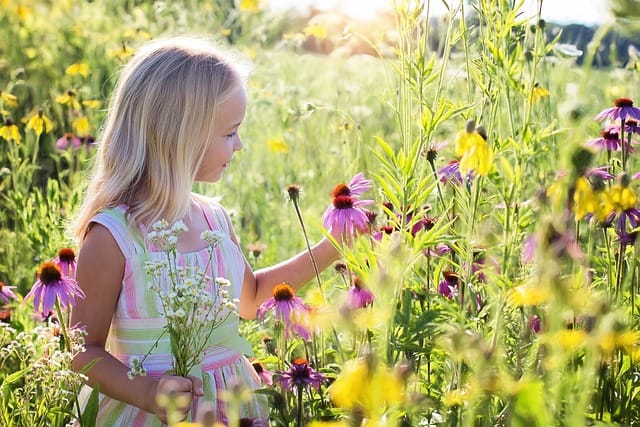Embarking on the journey of toddlerhood is an exciting adventure, especially when your little one takes those initial wobbly steps. As parents, our hearts swell with pride and a hint of trepidation. It’s crucial to create a safe haven for these newfound explorers, a space where their curiosity can flourish without compromising their safety.
In this guide, we’ll delve into the art of crafting a secure environment for your toddler’s walking journey, ensuring they navigate this stage with joy and confidence.

1. Clearing the Path:
Imagine your toddler’s world through their eyes – every nook and cranny seems like a hidden treasure waiting to be discovered. Clearing the walking path of potential obstacles is the first step in creating a safe environment.
Keep the floors clutter-free and ensure no loose cords or toys are lying around. Simple steps like securing loose carpets and removing small objects can make a world of difference.
2. Toddler-Proofing Furniture:
Your home’s furniture becomes an integral part of your toddler’s walking terrain. To make it toddler-friendly, consider installing corner guards on sharp edges to prevent accidental bumps. Choose easy to clean modular furniture – a little spilled juice won’t spell disaster.
Creating a cozy corner with soft cushions can encourage exploration without the fear of hard knocks.
3. Safety Latches and Locks:
As your toddler’s curiosity blossoms, so does their desire to open every cabinet and drawer in sight. Invest in safety latches and locks to keep potentially hazardous items out of reach. This simple yet effective measure ensures your toddler’s safety without stifling their innate curiosity.
4. Stairway to Safety:
Stairs can be a daunting challenge for a toddler taking their first steps. Install safety gates at the top and bottom of staircases to create a protective barrier. These gates act as a reassuring presence, allowing your toddler to explore without the looming danger of stairs.
5. Electrical Safety:
Toddlers are notorious for their fascination with outlets and cords. Secure electrical outlets with safety plugs and organize cords to reduce the risk of tripping. Consider using cord organizers to keep them out of reach, minimizing the chances of accidental tugs and unplugs.
6. The Art of Supervision:
While creating a safe environment is crucial, nothing beats the importance of active supervision. Keep a watchful eye on your toddler as they navigate their surroundings. It not only ensures their safety but also builds trust and confidence in their newfound abilities.
7. Flooring Matters:
Choosing the right flooring can significantly impact your toddler’s walking experience. Opt for soft, non-slip flooring materials that provide a gentle cushion in case of falls. Carpets, foam tiles, or rugs with non-skid backing are excellent choices, creating a comfortable and secure surface for your little one to explore.
8. Outdoor Adventures:
Extend your safety measures beyond the confines of your home. Ensure outdoor spaces are secure and free from hazards. Fenced play areas with soft ground coverings, like mulch or rubber, offer a secure space for your toddler to explore nature’s wonders without compromising their safety.
9. Creating a Sensory Haven:
Toddlers learn through sensory exploration, and providing a sensory-rich environment can enhance their walking journey. Incorporate textures, colors, and interactive elements in their surroundings.
Consider a tactile rug or textured wall decals to stimulate their senses, transforming their walking space into a haven of discovery. This not only adds an extra layer of engagement but also contributes to their overall cognitive and motor skill development.
Crafting a safe environment for your toddler’s walking journey is a labor of love, filled with joy and anticipation. Through thoughtful consideration and simple adjustments, you can create a haven where your little one can explore with confidence.
From securing furniture to supervising their every move, every measure contributes to a safe and nurturing space.
FAQs: Creating a Safe Environment for Your Toddler’s Walking Journey
Q: What are the first steps to create a safe walking environment for my toddler? A: Start by clearing the walking path of any obstacles. This includes removing loose cords, toys, and securing loose carpets. Keeping floors clutter-free is essential to ensure a safe walking space.
Q: How can I make my furniture safer for a toddler? A: Install corner guards on sharp furniture edges to prevent bumps and bruises. Choose modular furniture that’s easy to clean, and consider creating a cozy corner with soft cushions to encourage safe exploration.
Q: What kind of safety latches and locks should I use? A: Invest in sturdy safety latches and locks for cabinets and drawers to keep hazardous items out of your toddler’s reach. These should be secure enough to resist a toddler’s curiosity but easy for adults to operate.
Q: How can I make stairs safer for my toddler? A: Install safety gates at both the top and bottom of staircases. These gates create a protective barrier and prevent your toddler from accessing stairs without supervision.
Q: What are the best practices for electrical safety around toddlers? A: Use safety plugs for all accessible electrical outlets and organize cords to prevent tripping hazards. Cord organizers can keep cords out of reach and reduce the risk of accidental unplugs.
Q: How important is supervision in ensuring my toddler’s safety? A: Active supervision is crucial. Always keep a watchful eye on your toddler as they explore their surroundings. This not only ensures their safety but also helps build their confidence in navigating new spaces.
Q: What type of flooring is best for a toddler learning to walk? A: Opt for soft, non-slip flooring materials like carpets, foam tiles, or rugs with non-skid backing. These provide a gentle cushion for falls and create a comfortable and secure surface for exploration.
Q: How can I ensure my toddler’s safety during outdoor activities? A: Secure outdoor play areas with fences and use soft ground coverings like mulch or rubber. Always supervise outdoor play and ensure the area is free from potential hazards.
Q: How can I create a sensory-rich environment for my toddler? A: Incorporate various textures, colors, and interactive elements in your toddler’s environment. Use tactile rugs, textured wall decals, and other sensory items to stimulate their senses and aid in cognitive and motor skill development.

Mo Mulla is a work-from-home dad who co-parents 2 beautiful children and blogs all about his lifestyle with smart parenting tips and practical lifestyle hacks!
